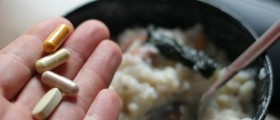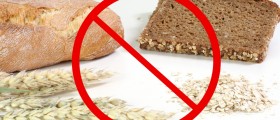
Lactose intolerance is a condition described as a patient’s inability to metabolize lactose. Lactose is a disaccharide sugar that is found in milk and formed from galactose and glucose. Lactose makes up from 2 to 8 percent of milk weight. Patients are lactose intolerant if their body lacks the required enzyme lactase involved in the hydrolysis of the disaccharide lactose into constituent galactose and glucose monomers. In other words, patients without sufficient levels of enzyme lactase will not be able to digest lactose from milk and other dairy products. Expressed this way, it seems quite unusual that people are having problems with milk digestion, but it is estimated that approximately 75% of all adults worldwide express symptoms of lactose intolerance in a mild or severe form.
Causes of lactose intolerance
Symptoms of lactose intolerance occur whenever there are low levels of the enzyme lactase in the small intestines. The lining of the small intestine produces the enzyme lactase, which attaches to the lactose molecules and breaks them down to simpler sugars, glucose and glactose. These simple sugars are then absorbed into the bloodstream and carried away all over the body to feed the living cells. When the levels of enzyme lactase are insufficient, the lactose is passed to the colon, undigested, where it is exposed to various bacteria that normally populate this part of the digestive system. The symptoms of lactose intolerance occur from interaction of bacteria and undigested lactase.
Lactose intolerance can be a congenital condition, passed from generation to generation in an autosomal recessive pattern of inheritance. It also results with aging, since the body produces very large amounts of lactase at birth and during the early childhood, when mammals use the milk as the primary food source. In other cases, lactose intolerance occurs as a result of illness or injury to the small intestine.
Symptoms of lactose intolerance
First symptoms of lactose intolerance are most likely to occur anywhere between 30 minutes and 2 hours after a person eats or drinks milk products. The symptoms are often more severe if a patient consumes large amounts of milk. The lactose intolerance usually manifests in abdominal bloating accompanied with cramps. Patients will normally have problems with diarrhea and nausea, as well with stomach gas. Symptoms are usually mild but highly unpleasant. Children that are lactose intolerant may even have slow growth rates or suffer from unexplained weight loss.
The only way to manage the condition is to eat fewer dairy products. A diet has to be carefully tailored to exclude milk but include other sources of calcium such as almonds, broccoli, canned salmon, oranges, kale, and various milk substitutes.

















Your thoughts on this
Loading...